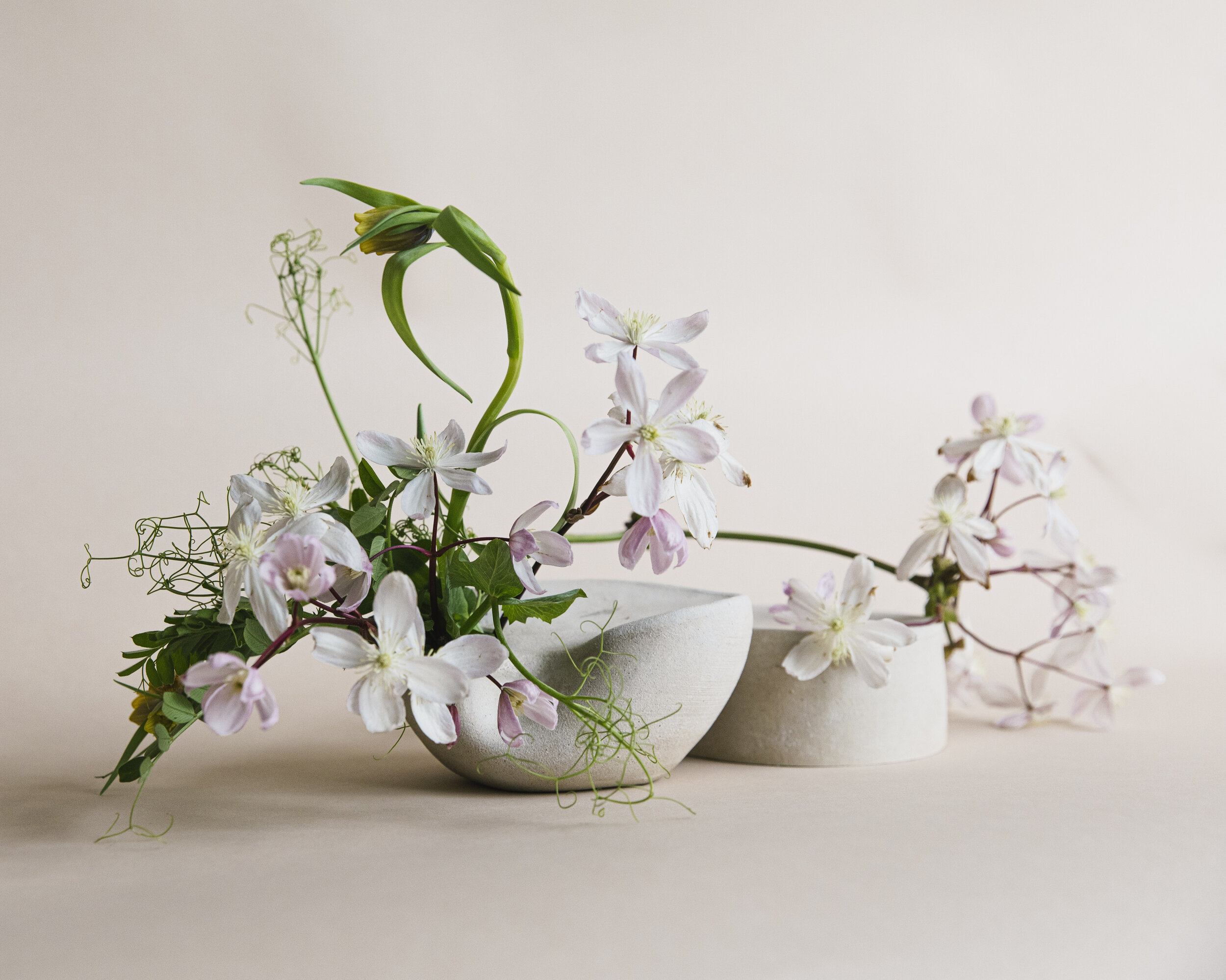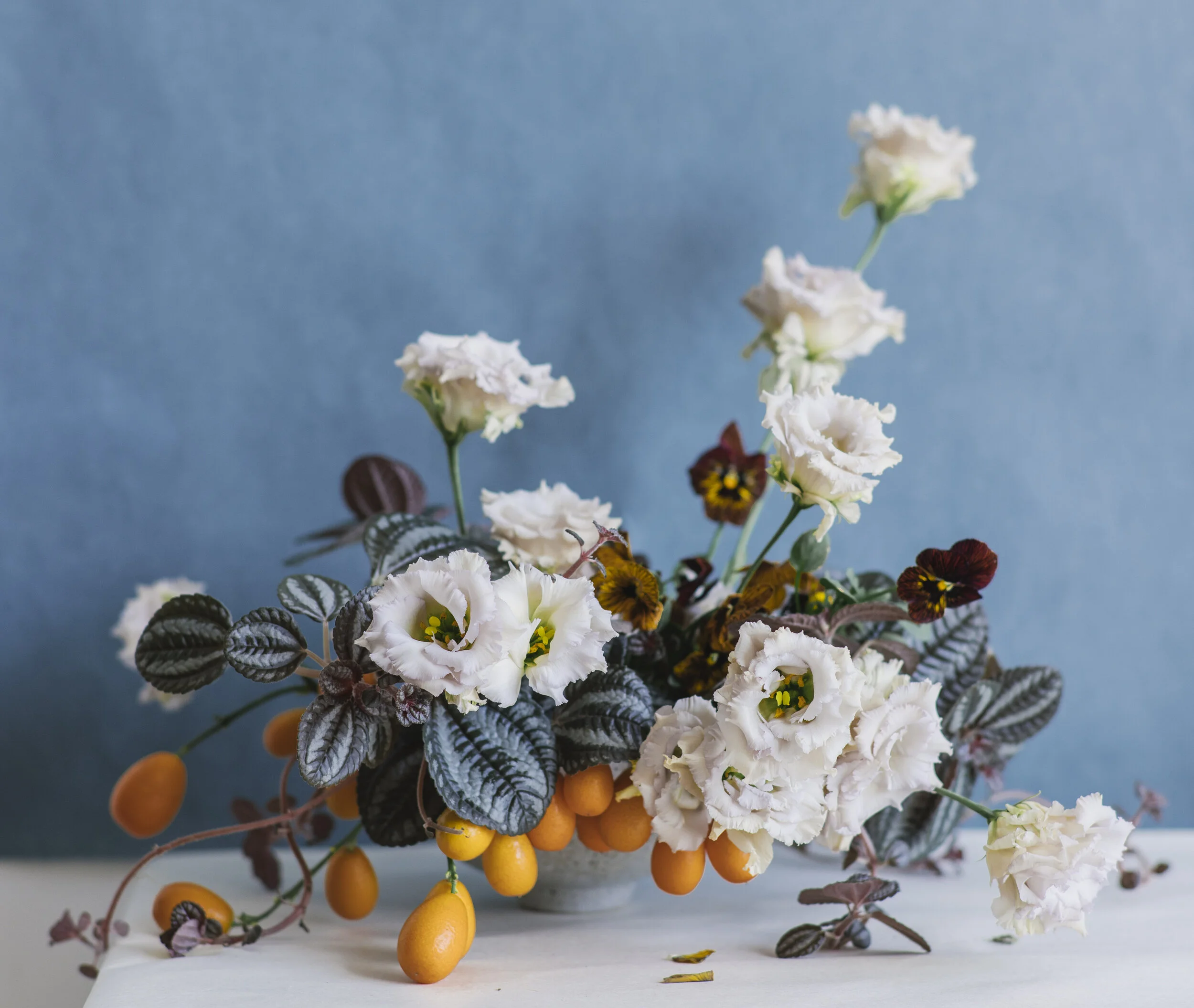The Art of Ikebana With Floral Designers Amanda Luu and Ivanka Matsuba of Studio Mondine
There are many ways to approach a flower arrangement, but one of the most striking is the art of Ikebana, a style originating as far back as the 6th century in Japan.. While minimalist in nature, it has the ability to make a statement with the simple placement of a flowering branch or a single blossom nestled into a low bowl. Today there are a wave of floral designers bringing their interpretation of the style including Amanda Luu and Ivanka Matsuba of Studio Mondine. In their first book on the subject, Ikebana Unbound: : A Modern Approach to the Ancient Japanese Art of Flower Arranging (Artisan) they teach the pillars of this living art, which in essence connecting to nature through the seasons. I caught up with Amanda to find out what inspired her to start working with flowers, the process of writing the book and more.
Excerpted from Ikebana Unbound by Amanda Luu and Ivanka Matsuba (Artisan Books). Copyright © 2020. Photographs by M.K Sadler.
Congratulations on your first book ‘Ikebana Unbound’, it’s incredibly beautiful! But let’s start at the beginning how did you two meet?
Thank you! Ivanka and I met as freelancers—we kept running into each other, weekend after weekend, at some of the top Bay Area floral design studios. As we’re both quite focused when we’re arranging, it took over a month before we even formally introduced ourselves! Over lunch, we realized that while we loved event freelancing and making those massive flower displays, we both wanted to create quieter, more sensitive flowers.
What was your background before starting Studio Mondine?
In school, I studied environmental economics and statistics, which is seemingly pretty far away from the work that I’m doing today as a florist. I’m not sure how it will come full circle, but I trust that it will, as all things tend to with time.
How did you first come into the Ikebana style that has thought to have existed since the sixth century?
Without any formal training, my kitchen island explorations were minimalistic by default, because they were made with flowers and leaves gleaned from the city streets. The pleasure that these little flower meditations provided is what propelled me to dig deeper. The world of floral design is vast, with lots of well-documented perspectives and philosophies. I personally gravitated to the forms that revealed themselves in old ikebana texts.
I’d love to hear what inspired you to write your book?
Those old ikebana texts—they’re incredibly detailed, dense, and academic. And I strongly encourage them for self-study! Our book should be treated as a primer, something to whet the appetite for those seeking deeper engagement with the various schools of ikebana. I hope that new students of floral design find it useful!
I love chatting about process, so what was the process like of writing this book?
It was a dream, really. We’d worked with MK Sadler when we first started our design studio, so in that full circle way, she was the only person we wanted to shoot the book. To capture the changing of the seasons, she came up to our San Francisco studio every month for an entire year to shoot. Kaela Rawson lent her incredible eye to styling the sets. And for our part, we were able to source vessels from ceramicists we admired AND product from our favorite local farms.
Ikebana, has quite a few styles, like Rikka, Shōka and Nageire, all factoring in different elements of nature. Can you explain the fundamentals of the Ikebana style for those who might not be familiar?
The ikebana tradition has grown from just one school of thought to several thousand! The first practitioners of ikebana were monks creating altar offerings. Over time, the art of flower arranging became a secular one. The earliest and most formal style is Rikka, reserved for religious ceremonies. Nearly in tandem, the foundations of the more casual Nageire style were being formed. Shōka style evolved from Nageire, and even more styles emerged as Shōka style was being formalized. The arrangements in our book call out a specific style when we’re sticking close to one, but could otherwise be considered Jiyūka, or free style.
At first it might be intimidating to create an arrangement in this minimal approach at first, but I love how you structured the book with thought out instructions.What are three things to keep in mind when approaching this style of arrangement?
Just as there’s no wrong way to meditate, there’s no wrong way to commune with flowers. So that’s one—let go of expectations, and see where your intuition leads. For two, I’d recommend paying attention to the details. When working in a very minimal style, obscuring the mechanics and keeping the water clean and clear of debris adds to the overall effect. And lastly, pay attention to the materials available to you that might often be overlooked. Some of my favorite arrangements were those made with a few humble clippings from just outside our studio doors.
Two of my favorite arrangements in the book are the ‘California Gold’ and the ‘Rose Garden’ (the colors here are incredible!). Where do you look to get inspired for color palettes, textures, etc?
This morning as I was taking out the recycling, I stopped dead in my tracks when I saw a plush carpet of neon green grass growing neatly around rocks in the walking path, almost as if they’d been trimmed back like hedges. The effect was so so so natural AND so so SO contemporary. I dropped onto hands and knees to investigate further. At close range, the carpet became a forest.
What has been one flower or botanical that you recently discovered that is a new favorite when it comes to arranging?
I find myself reaching for grasses most often these days. I’ve been working through an idea of braiding materials together, and grasses lend themselves nicely to manipulation.






